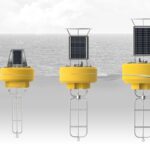While data loggers, sensors, and cloud datacenters make up the backbone of environmental measurement systems for continuous monitoring, various other displays are commonly used both during fieldwork and normal operation. Field computers, handheld display units, and mobile devices like smartphones are used both for real-time data collection and configuration of permanent installations. On-site displays are […]
Articles Tagged: environmental data
2.6 Cloud Datacenter
Cloud datacenters, also known as web-based or online datacenters, play a pivotal role in managing the data delivered by modern environmental data collection systems. They provide a secure, centralized platform for storing, processing, and analyzing collected data via the Internet, thereby enhancing the accessibility, scalability, and functionality of environmental monitoring programs. Cloud datacenters typically offer […]
2.5 Power and Solar Charging
With remote monitoring also comes the need for an autonomous, efficient power supply to ensure the continuous operation of sensors, data loggers, and telemetry equipment. Systems installed at or near existing infrastructure can receive power from the electrical grid. However, fixed power supplies are not available in many applications, so alternative means are required. In […]
2.4 Telemetry
Telemetry refers to the automatic measurement and wireless transmission of data from remote sensors to centralized data collection and management systems. Such technology is crucial for environmental monitoring, particularly in remote locations where real-time data is essential to meet regulatory requirements or to provide quick notice of environmental conditions. Telemetry systems can use various communication […]
2.3 Data Loggers
Data logger is a broad term that may refer to any device that stores sensor measurement data. Many smart sensors integrate on-board data logging electronics. However, for the purposes of environmental data logging, systems typically include dedicated data logger units that can interface with multiple sensor types and, in many cases, transmit the data. Data […]
2.2 Smart Sensors
Smart sensors are advanced measurement devices equipped with integrated processing capabilities and other features that enhance their functionality and reliability. While traditional sensors simply convert physical phenomena into electrical signals that can be recorded and processed, smart sensors can preprocess the data to provide instantaneous results. In addition, they frequently include advanced features such as […]
2.1 Introduction to Data Collection
Environmental data collection is fundamental to scientific research, environmental management, and regulatory compliance. The systematic gathering of information about natural systems helps scientists, engineers, and policymakers make informed decisions to protect ecosystems, manage resources, and understand environmental changes. Data collection can range from simple, manual measurements to complex, automated systems that continuously monitor various environmental […]
1.1 Historical Context and Modern Innovations in Environmental Monitoring
This handbook provides a comprehensive guide to modern techniques in measuring the natural environment, including water quality, hydrology, weather, and soil. It focuses on environmental monitoring and data collection, including sensors, remote data acquisition systems, and cloud-based data management. Its aim is to be a practical resource for environmental professionals, researchers, and students to quickly locate […]
Custom Buoy Configurations
NexSens custom buoy configurations offer a robust, reliable, flexible platform for placing user-supplied sensing electronics in the water.
3 Unique Monitoring Buoy Applications
There are many ways to deploy monitoring buoys, and many situations that might benefit from the monitoring power this kind of platform brings.










